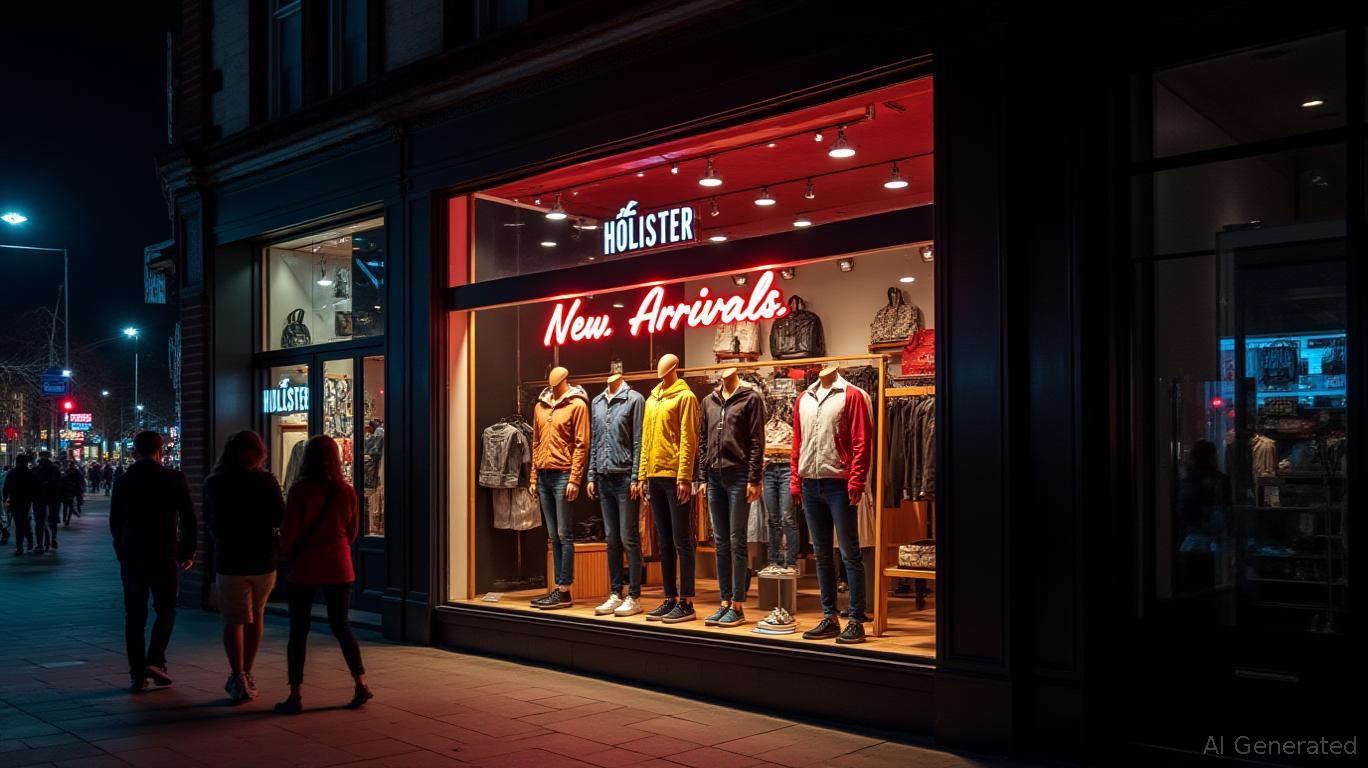Abercrombie & Fitch’s Q4 Earnings Signal a Strategic Shift Amid Retail Crosscurrents
Abercrombie & Fitch (ANF) closed fiscal 2024 on a record high, but its Q4 earnings report and cautious 2025 guidance reveal a retailer at a crossroads. While the company delivered modest revenue growth and profit gains, its decision to prioritize profitability over aggressive expansion underscores the challenges facing apparel retailers in an uncertain economic landscape. The results highlight a stark reality: even brands with strong brand equity must adapt to shifting consumer preferences, macroeconomic headwinds, and geopolitical risks.
The Q4 Performance: A High-Water Mark with Caveats
In Q4 2024, ANF reported net sales of $1.58 billion, a 9% year-over-year increase, narrowly surpassing analyst expectations of $1.57 billion. Net income rose to $187 million, or $3.57 per diluted share, marking a 19% improvement over Q4 2023. Full-year results were even more robust, with $4.95 billion in total revenue—up 16% from 2023—and net income hitting a record $566 million. Hollister, ANF’s growth engine, contributed 17% constant-currency sales growth in Q4, while the core Abercrombie brand saw a 10% increase.

Yet the celebration was short-lived. ANF’s outlook for fiscal 2025 signaled a slowdown. The company projects sales growth of just 3–5%, far below the 6.8% consensus estimate, with Q1 EPS guidance of $1.25–$1.45—well below the $1.97 analysts anticipated. The stock dropped nearly 5% in premarket trading, reflecting investor skepticism about ANF’s ability to sustain momentum amid rising macroeconomic risks.
The Strategic Pivot: From Growth to Resilience
CEO Fran Horowitz framed the shift as a deliberate move toward “sustainable, profitable growth.” The strategy prioritizes margin improvement over top-line expansion, with ANF emphasizing operational discipline, selective inventory investments, and international market opportunities. This pivot is critical: Q4’s operating margin rose to 16.2% of sales, up from 15.3% in 2023, but management expects margins to flatten in 2025 due to cost pressures.
The guidance miss also reflects broader industry pressures. ANF cited cautious consumer spending, geopolitical risks, and tariff-related pricing challenges. These factors are particularly acute in discretionary retail, where competitors like PVH (owner of Tommy Hilfiger and Calvin Klein) and Lululemon face similar headwinds. ANF’s reliance on digital marketing—especially amid regulatory threats to platforms like TikTok—adds another layer of uncertainty.
Data-Driven Risks and Opportunities
ANF’s balance sheet remains a bright spot: cash reserves stood at $773 million as of February 2025, down slightly from prior periods but still ample to fund strategic initiatives. The company’s focus on international markets, particularly Asia-Pacific, could pay dividends, as Hollister’s 15% full-year growth in APAC suggests.
However, the 3–5% sales growth target for 2025 is a stark contrast to 2024’s 16% surge. Historically, ANF’s sales growth has been volatile, with annual revenue gains averaging 6% over the past five years. The current guidance implies a return to that trend, but investors may question whether the brand can maintain relevance in an increasingly fragmented fashion landscape.
Conclusion: A Brand at a Tipping Point
Abercrombie & Fitch’s Q4 results are a mixed bag. The company has undeniably built momentum, with record annual sales and strong brand performance. Yet the 2025 outlook reflects a recognition that the “teen apparel boom” era may be ending. The pivot to profitability is logical—margins have expanded steadily, from 11.3% of sales in 2023 to 15% in 2024—but investors will need evidence that ANF can navigate a slowdown without sacrificing long-term health.
The stock’s post-earnings drop signals skepticism about ANF’s ability to outpace competitors in a cooling market. While its cash reserves and brand equity provide a foundation for resilience, the path forward hinges on executing a nuanced strategy: balancing disciplined cost management, selective international expansion, and staying relevant to evolving consumer tastes. For now, ANF’s story is one of transition—a retailer trading growth for stability in an industry where both are hard to sustain.
In an era where every dollar counts, ANF’s focus on margins over metrics may be its best defense. But with 2025’s low-bar targets, investors will be watching closely to see if the brand’s signature confidence can translate into sustained success.


_442a2dcc1749832873286.jpeg)
_e68fac6d1749831664430.jpeg)






